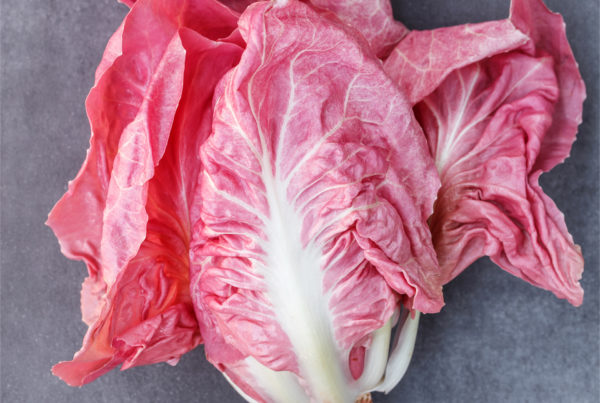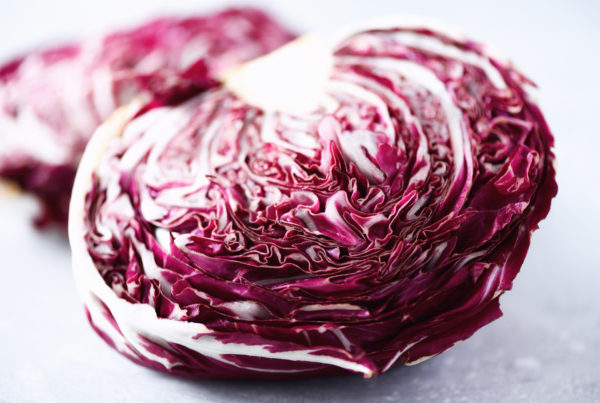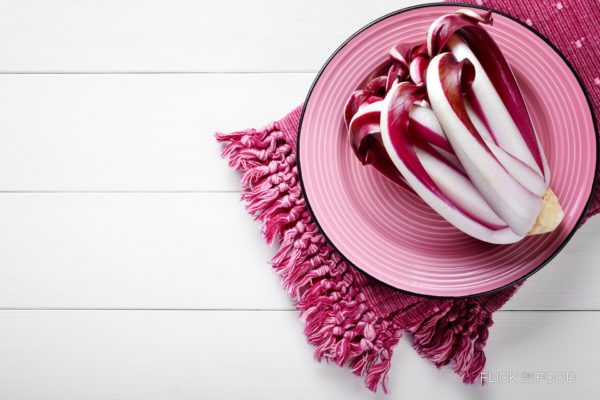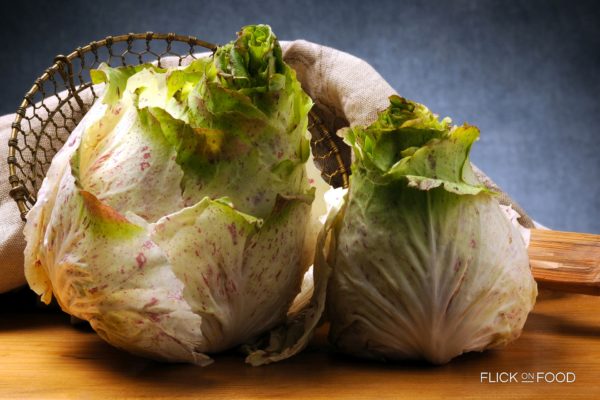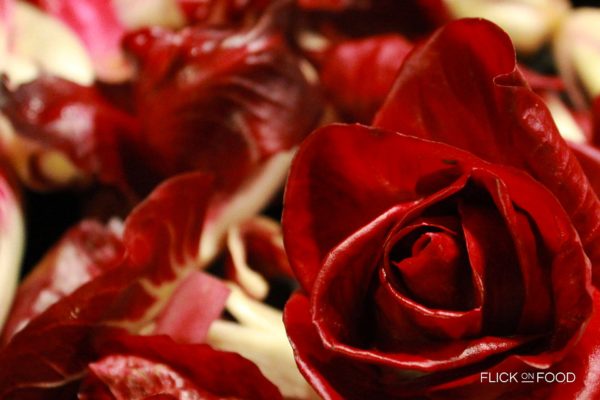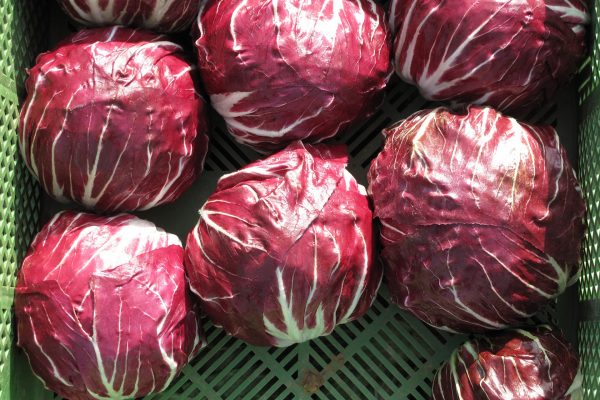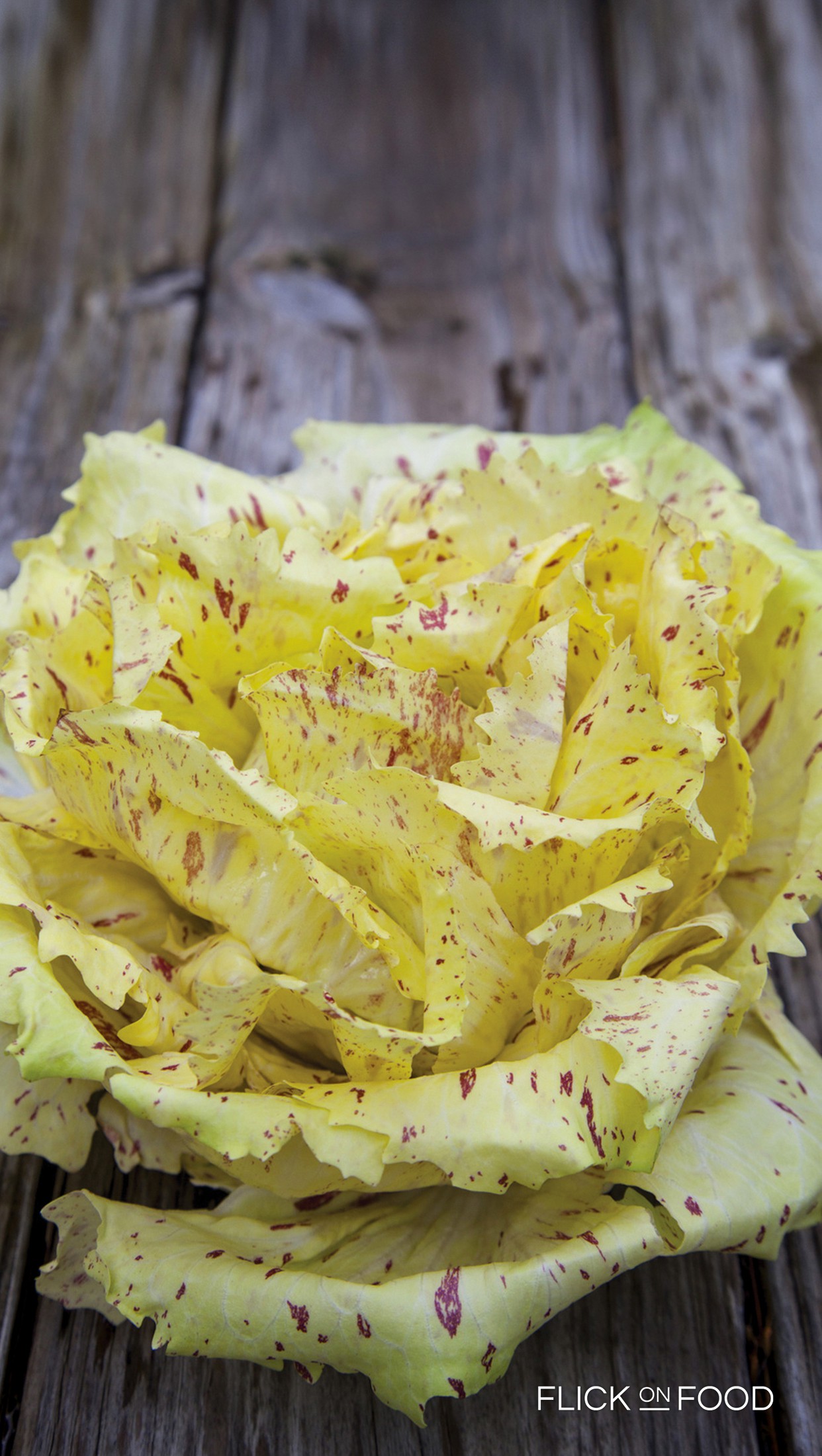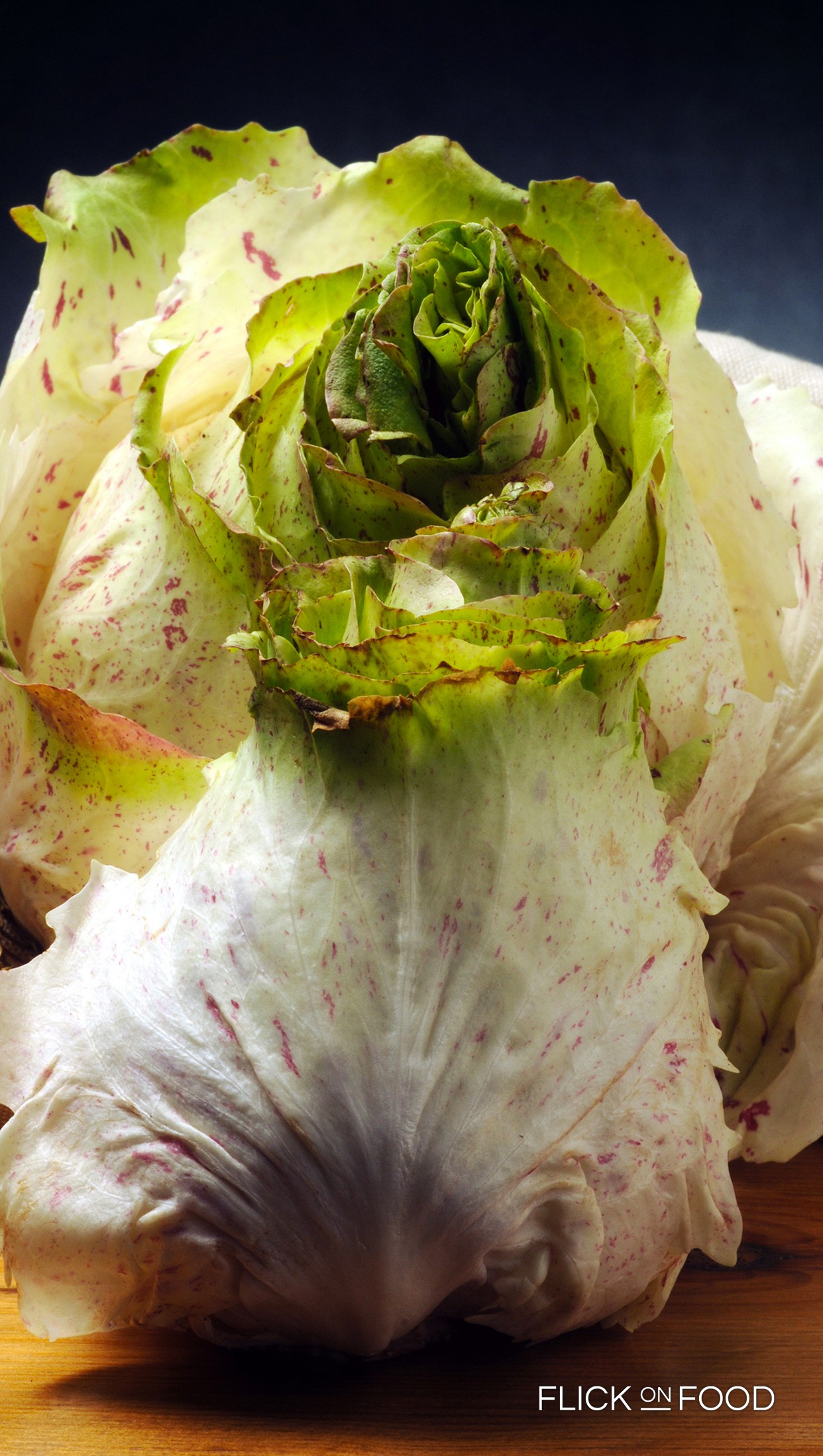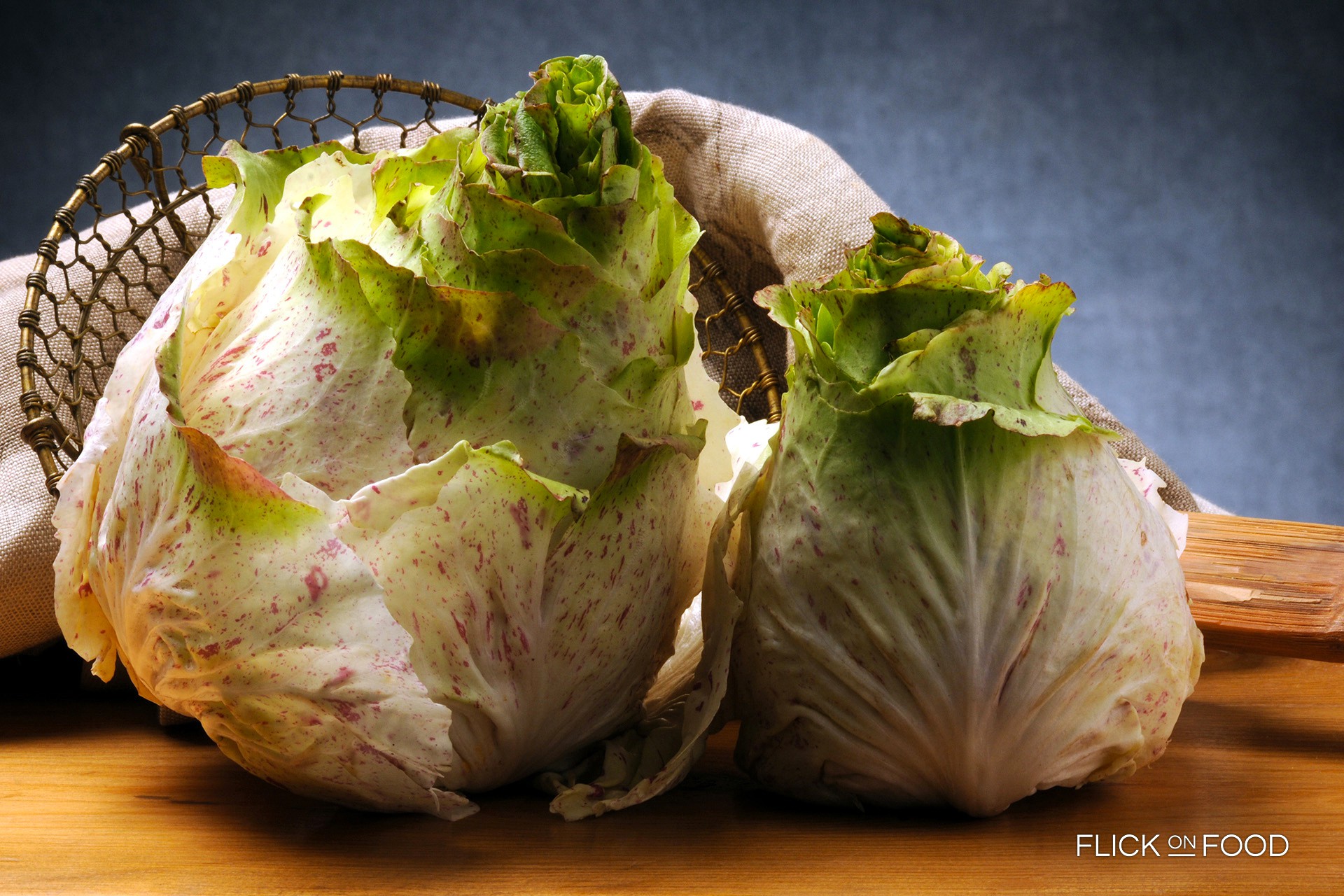
Crispy, fresh and bitter: radicchio di Lusia is perfect in an autumn salad.
Origin
The striped radicchio di Lusia, also simply called ‘white radicchio’, is made of rounded white or yellow leaves streaked with red, which are fresh but slightly bitter. Scholars believe that all varieties of radicchio that are currently grown come from the “Rosso di Treviso” type. This variety was introduced in Europe around the 15th century in the Veneto areas where the most well known and prized varieties are still found today. In fact, it’s thanks to local producers who worked to genetically improve the Rosso di Treviso that the streaky varieties came about. One of these is the “Castelfranco”, from which the radicchio di Lusia derives, after a massal selection that took place in the 1940s.
Cookit
Because of its slightly bitter flavor, di Lusia radicchio is often eaten raw in autumn salads. It’s particularly rich in calcium, iron, phosphorus, magnesium and vitamins: it’s perfect alongside spinach and fresh fruit which enhance its benefits for cleansing, water retention and digestion. That bitter taste is due to a chemical compound called guaianolide: an antibacterial, antimalarial and anti-inflammatory in time for the first frosts of autumn. It’s also great cooked in risotto because it’s more delicate than red radicchio.
Did you know
Radicchio is actually a type of chicory: more precisely, a red-leaf chicory. Even though it’s mainly white, the di Lusia variety is no exception. The difference is in the whitening process: the whole radicchio heads are harvested manually and buried in sand, covered in hay and kept moist. After about 8–10 days, the radicchio is taken out and cleaned, and this is how it develops a more refined taste.



